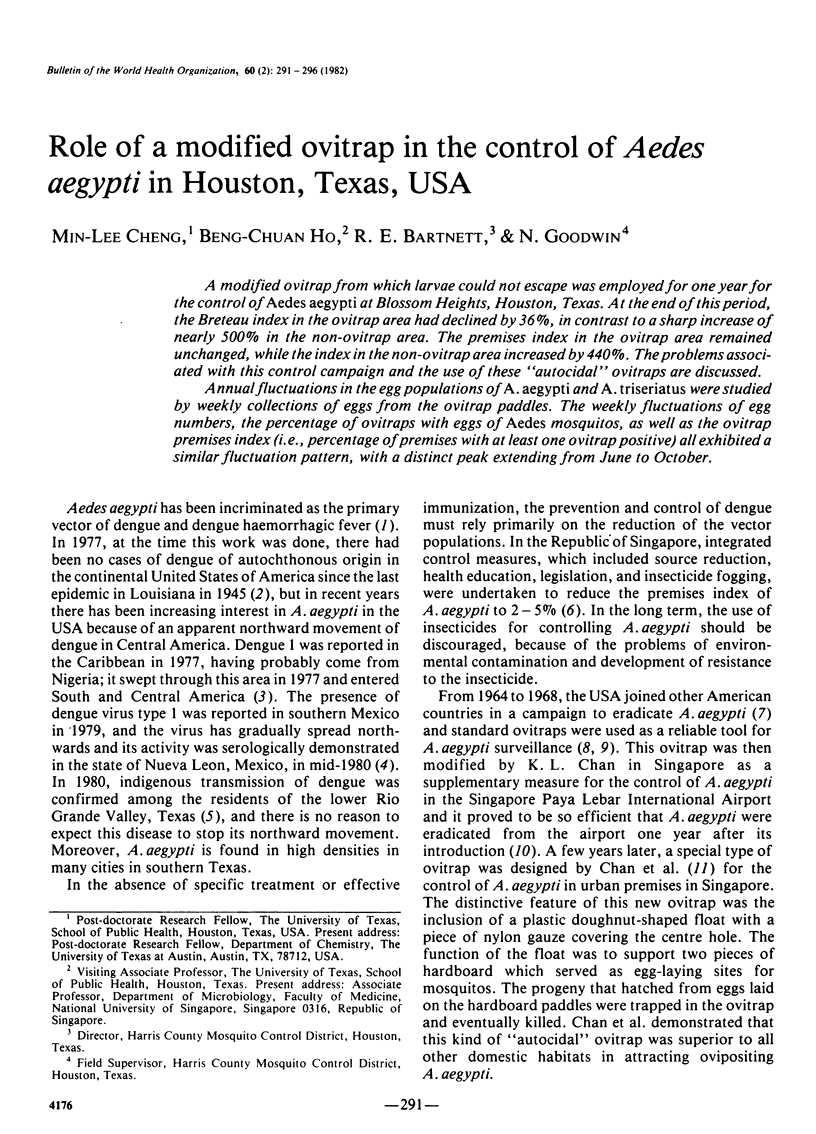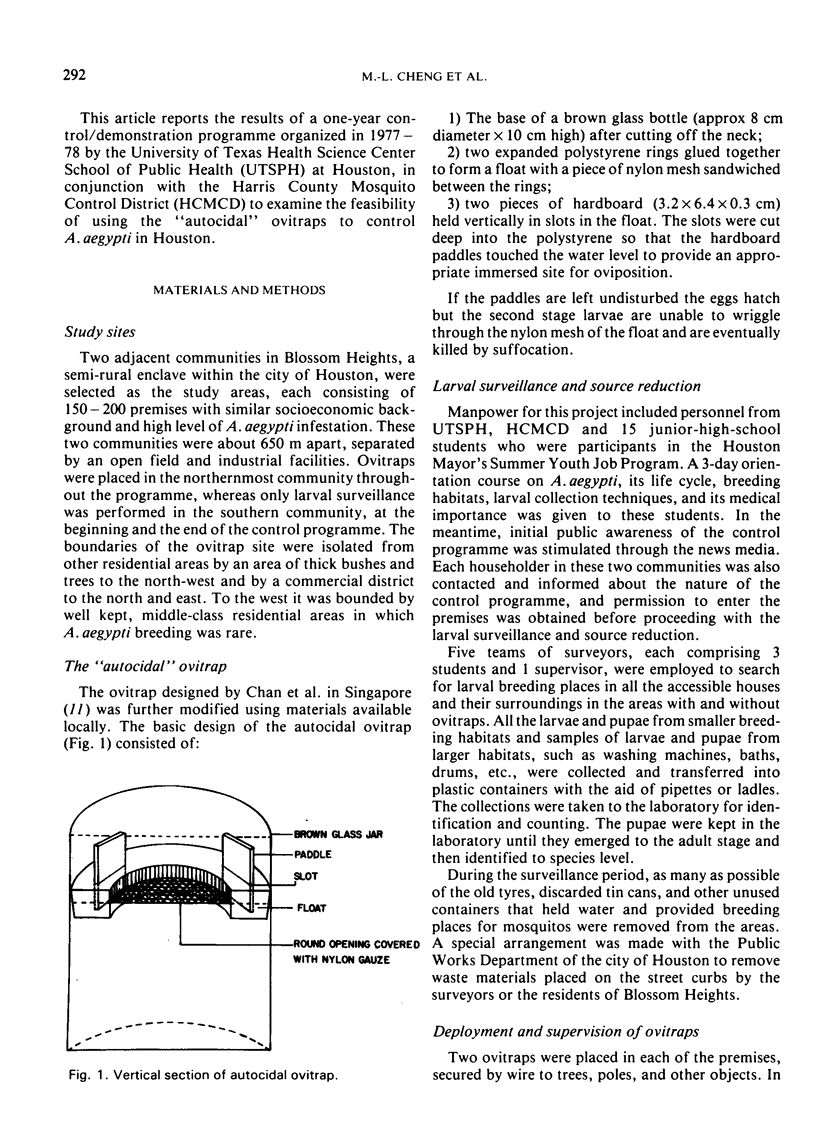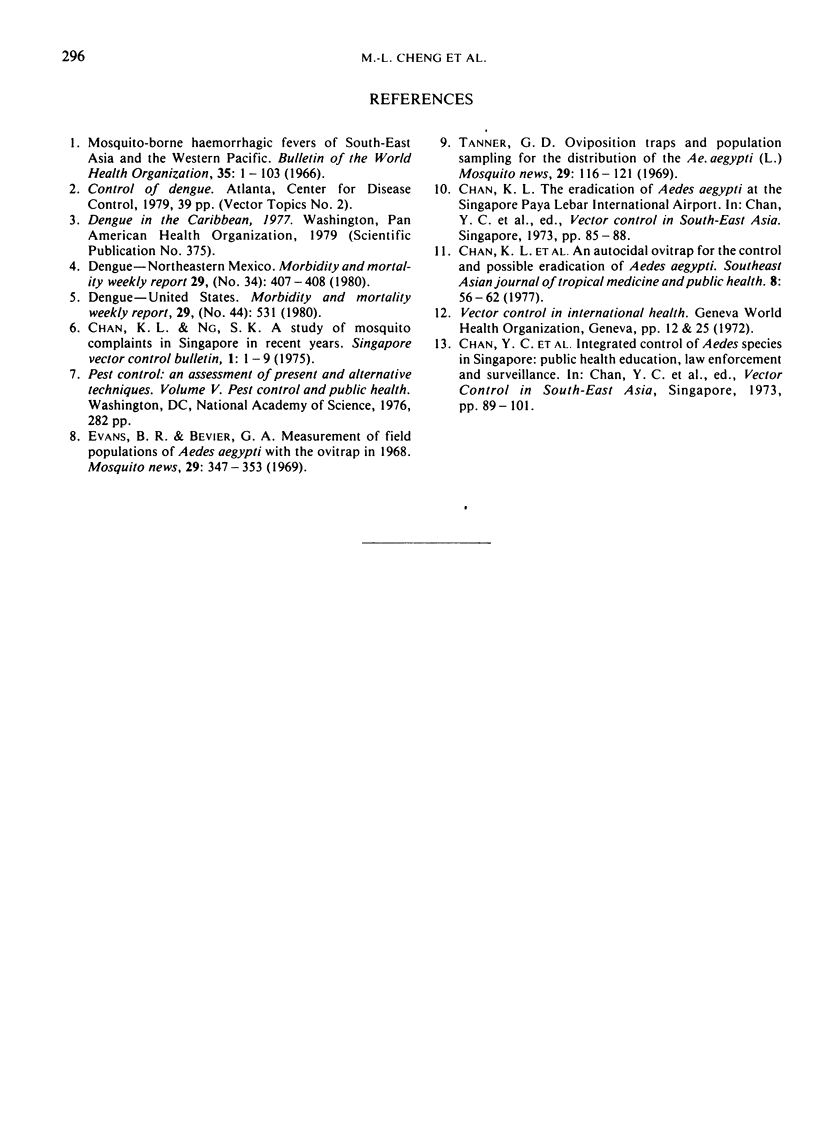Abstract
A modified ovitrap from which larvae could not escape was employed for one year for the control of Aedes aegypti at Blossom Heights, Houston, Texas. At the end of this period, the Breteau index in the ovitrap area had declined by 36%, in contrast to a sharp increase of nearly 500% in the non-ovitrap area. The premises index in the ovitrap area remained unchanged, while the index in the non-ovitrap area increased by 440%. The problems associated with this control campaign and the use of these “autocidal” ovitraps are discussed.
Annual fluctuations in the egg populations of A. aegypti and A. triseriatus were studied by weekly collections of eggs from the ovitrap paddles. The weekly fluctuations of egg numbers, the percentage of ovitraps with eggs of Aedes mosquitos, as well as the ovitrap premises index (i.e., percentage of premises with at least one ovitrap positive) all exhibited a similar fluctuation pattern, with a distinct peak extending from June to October.
Full text
PDF







